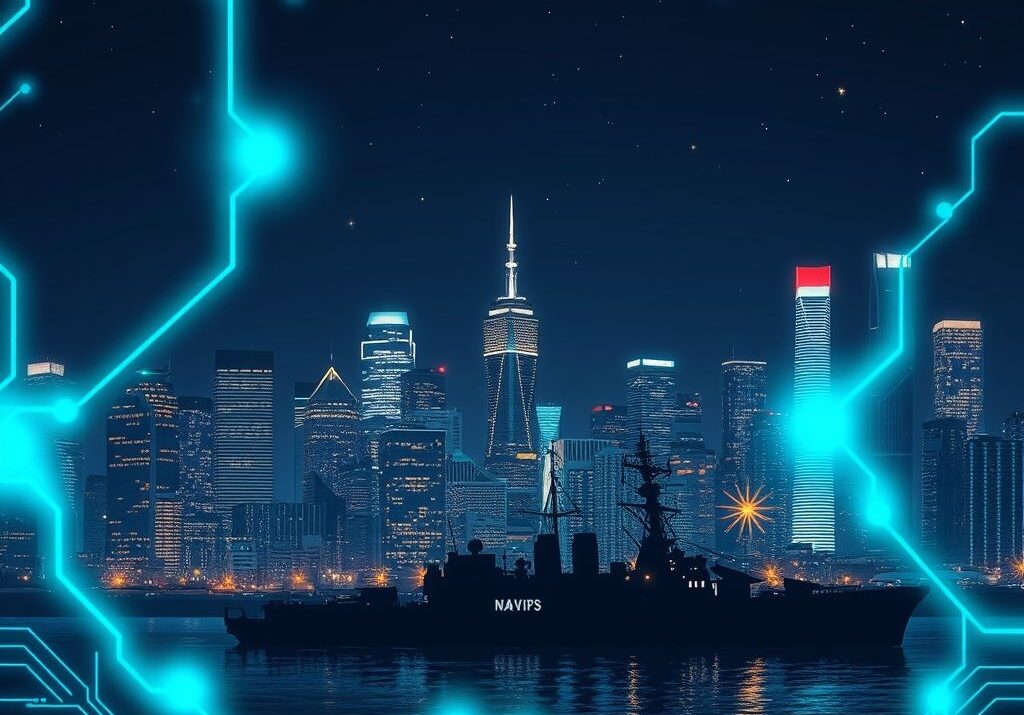Forget the image of stuffy boardrooms and endless red tape. The U.S. Navy is making a serious play for startup love, and honestly, I’m intrigued.
I stumbled upon a TechCrunch piece recently that highlighted how the Navy’s Chief Technology Officer, Justin Fanelli, is spearheading an aggressive outreach to the startup world. While headlines are often dominated by Silicon Valley big shots like Palantir, Meta, and OpenAI dipping their toes into the military pool, this is a different, arguably more agile approach. The Navy isn’t just interested in the established giants; they’re actively courting the innovative minds brewing up the next big thing in garages and co-working spaces.
Why this sudden shift? Well, the pace of technological advancement is blistering, and traditional defense procurement can be…glacial. Startups, with their nimble structures and disruptive ideas, offer a way for the Navy to stay ahead of the curve. Think about it: smaller companies are often more willing to take risks and experiment with emerging technologies like AI, advanced sensors, and autonomous systems – exactly what the Navy needs to maintain its edge.
The proof is in the pudding. According to a report by the National Defense Industrial Association (NDIA), “small businesses represent the vast majority (98%) of the defense industrial base”. But capturing their innovation requires more than just opening the door; it demands a fundamental shift in how the Navy interacts with these companies.
This isn’t just about the Navy getting cooler tech; it’s about national security. As Deputy Defense Secretary Kathleen Hicks stated in a 2022 memo, “We must urgently broaden the Department’s innovation ecosystem and work more effectively with nontraditional defense companies” (Source: Department of Defense). The message is clear: innovation is no longer a luxury, it’s a necessity.
5 Takeaways from the Navy’s Startup Push:
- Agility is Key: The Navy recognizes that startups can move faster and innovate more efficiently than traditional defense contractors.
- Access to Cutting-Edge Tech: By engaging with startups, the Navy gains access to a wider range of emerging technologies.
- A Win-Win Scenario: Startups get funding and validation, while the Navy gets access to crucial innovations.
- Focus on Nontraditional Partners: The Navy is actively seeking out companies that haven’t traditionally worked with the defense sector.
- National Security Imperative: This push for innovation is driven by the need to maintain a competitive advantage in a rapidly changing world.
Frequently Asked Questions (FAQs)
- Why is the Navy focusing on startups now? The Navy needs faster innovation cycles to keep up with technological advancements.
- What kind of startups is the Navy looking for? Startups developing AI, advanced sensors, autonomous systems, and other cutting-edge technologies.
- How does a startup get involved with the Navy? By responding to SBIR/STTR opportunities and participating in Navy outreach programs.
- What are the benefits for startups working with the Navy? Funding, access to resources, validation of their technology, and potential for long-term contracts.
- Is it difficult for a small company to navigate the Navy’s procurement process? The Navy is working to simplify the process and make it more accessible to startups.
- Does this mean the Navy is abandoning traditional defense contractors? No, but they are diversifying their partnerships to include more innovative companies.
- What are the risks for startups working with the Navy? Bureaucracy, lengthy procurement processes, and potential intellectual property concerns.
- How is the Navy ensuring that startups’ intellectual property is protected? Through clear contracts and agreements that address IP rights.
- What impact will this have on the future of defense technology? It could lead to faster development and deployment of innovative technologies for national security.
- How can Cameroon based startups potentially benefit from this trend? While direct engagement might be limited, Cameroonian startups can follow the trends, adapt technologies to local contexts and potentially collaborate with international firms who partner with the US Navy.







